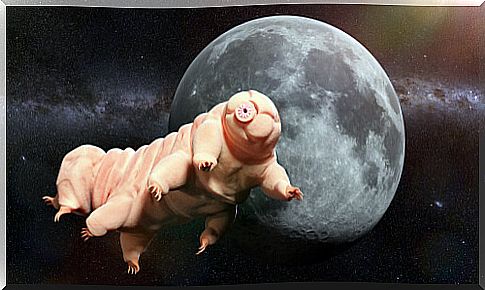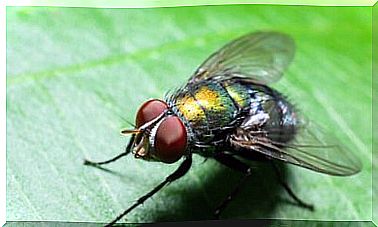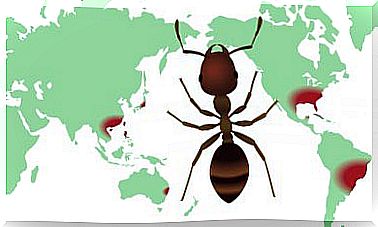Cryptobiosis: A Fascinating Process

Did you know that there are animals capable of inactivation in extreme situations?
That’s how it is! Some living beings enter a state of latency during which they do not perform any type of metabolic activity. This allows them to survive extraordinary environmental conditions such as desiccation, lack of oxygen, low temperatures, lethal radiation or a combination of all of them.
We invite you to continue reading, because before you is one of the most fascinating processes in nature: cryptobiosis.
Inactivation for survival
Cryptobiosis is a process carried out by some organisms when they are faced with adverse conditions. In this state, they stop their metabolic activity so that they neither reproduce nor develop until conditions become favorable again. Therefore, it is a reversible phase that some refer to as a resurrection process.
In this way, they are able to live for a long period of time in this state, we could even be talking about indefinite periods, or theoretically, infinite.
This ability is possessed, in addition to bacteria, by numerous invertebrate animals, such as embryonic cysts of crustaceans, rotifers, nematodes and tardigrades. Cases have also been seen in some plant tissues, seeds of some plants, propagules and even higher plants.
Considering what has been seen, it seems that this phase allows organisms to be on the brink of life, but also of death. That is why some scientists conclude that this state is considered the third form of biological organization: the cryptobiotic state.

The 4 types of cryptobiosis
Up to four types of cryptobiosis have been described depending on the extreme environmental situation that living beings face:
Anhydrobiosis
This type of cryptobiosis occurs when beings are in long periods of desiccation and is characterized by the loss of water through evaporation. In this way the animal loses more than 95% of its body water and suspends its metabolism.
Cryobiosis
An organism enters a state of cryobiosis when the temperature conditions are extremely low. This allows it to survive freezing.
For this process to take place properly, the cooling rate must be slow. The key to cryobiosis is in the freezing of the being, but avoiding the crystallization of liquids so as not to damage the internal tissues. Beings that experience this can live for years in a state of cryobiosis.
Anoxybiosis
This state is induced when oxygen levels in the environment are very low or even non-existent.
Osmobiosis
Animals that experience this type of cryptobiosis are those that face a great variety of salt concentrations.
Example of cryptobiont animals
Artemias salinas
When the circumstances are not optimal for the development and growth of the larvae of these small crustaceans, the eggs enter a state of inactivation for a long period of time, which can extend up to 10 years.
In this way, they will be able to withstand extreme situations such as the absence of water and oxygen, as well as temperatures below freezing. During these states of cryptobiosis, the eggs encyst and stop all metabolic processes until the conditions of water, oxygen and temperature are favorable.

Rotifers
Rotifers of the class Bdelloidea are microscopic invertebrates that live in fresh waters.
They are capable of going into anhydrobiosis under desiccated conditions. To do this, when the water evaporates, they adopt a formation called “tuns”, by which they reduce their body volume because they compact their organs and make the light disappear from the hollow organs.
The tardigrades
This is the cryptobiont organism par excellence.
Tardigrades, commonly known as water bears, are microscopic animals that inhabit both land, marine and freshwater environments. The most surprising thing is that they are capable of experiencing all four types of cryptobiosis:
- During anoxybiosis this microorganism becomes immobile, transparent and even rigid and in this state it can remain up to 5 days, except for strictly aquatic species that can last for a maximum of 3 days.
- As for the state of cryobiosis, it is a situation that allows them to survive frozen for several years.
- On the other hand, osmobiosis is an ability that allows freshwater tardigrades to contract when placed in a saline environment, while marine species become turgid in freshwater.
- Finally, when these animals experience situations in which the amount of water that surrounds them decreases, they contract, retract their heads and legs until they adopt the immobile “tun” form (like rotifers) and enter an anhydrobiosis state.
In this way, tardigrades are highly resistant to extreme environmental conditions such as:
- temperatures ranging from -273ºC to 150ºC,
- high pressures,
- the emptiness of space,
- radiation (both X-rays and UV),
- chemical products.

Conclution
As you can see, cryptobiosis is a fascinating process that allows certain animals to survive despite unfavorable environmental factors. This ability allows them to colonize environments or situations that are unviable for other organisms.
It is, therefore, an advantage in the animal world and one more example that nature will never cease to amaze us.









